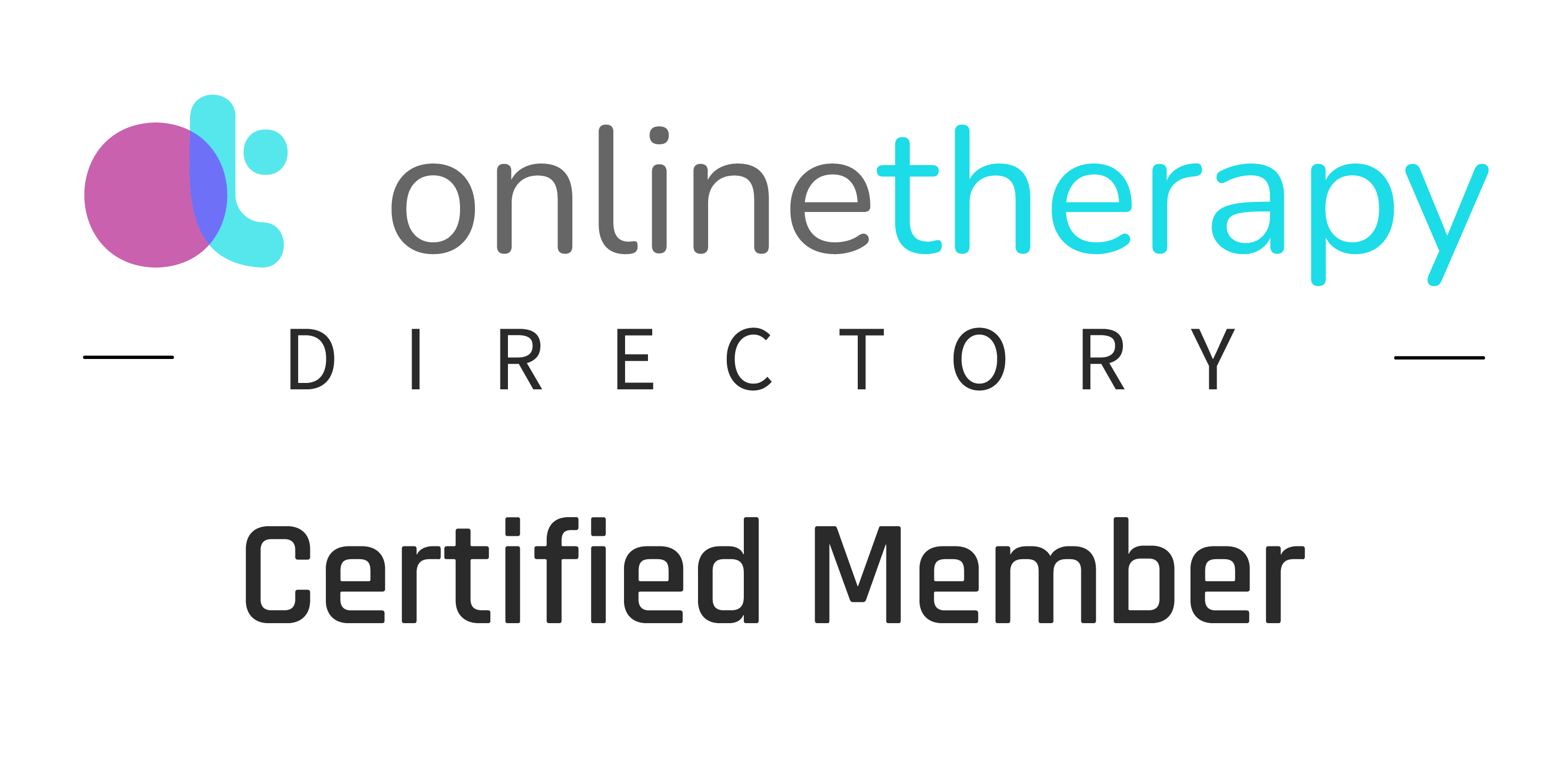Understanding the Different Types of Therapy: A Comprehensive Guide to Finding the Right Approach
Navigating the world of therapy can feel overwhelming, especially with the wide range of therapeutic approaches available today. Each therapy modality offers distinct benefits, making it essential to understand the differences so you can choose the best approach tailored to your individual needs. In this comprehensive guide, we’ll explore the most popular types of therapy, their advantages, and provide guidance on how to select the right one for you.
Cognitive Behavioral Therapy (CBT)
Overview: Cognitive Behavioral Therapy (CBT) is a short-term, goal-oriented therapy designed to help individuals identify and change negative thought patterns and behaviors.
Benefits:
Particularly effective for treating anxiety, depression, phobias, and obsessive-compulsive disorder (OCD).
CBT focuses on developing practical coping strategies, making it a highly structured approach.
Clients learn to challenge and reframe negative thinking, leading to long-term positive changes.
Ideal For: Individuals seeking a structured, solution-focused therapy that equips them with practical tools to manage emotional and psychological challenges.
Psychodynamic Therapy
Overview: Psychodynamic therapy seeks to uncover unconscious thoughts and feelings that influence present behaviors, often rooted in past experiences.
Benefits:
Offers deep insight into unresolved conflicts, leading to greater self-awareness.
Helps clients understand the underlying emotional drivers behind their thoughts and behaviors, making it effective for issues like depression, anxiety, and interpersonal difficulties.
Ideal For: Those looking for a deeper exploration of their emotional world and wanting to gain insights into the root causes of their issues.
Humanistic Therapy
Overview: Humanistic therapy emphasizes personal growth, self-awareness, and the therapeutic relationship, with approaches like person-centered therapy and Gestalt therapy falling under this umbrella.
Benefits:
Focuses on enhancing self-esteem, personal acceptance, and emotional authenticity.
Clients are encouraged to explore their feelings in a non-judgmental, supportive environment, promoting self-growth and resilience.
Ideal For: Individuals looking to foster personal growth and improve their sense of self-worth in a compassionate, client-centered setting.
Dialectical Behavior Therapy (DBT)
Overview: A specialized form of CBT, Dialectical Behavior Therapy (DBT) focuses on emotional regulation, mindfulness, distress tolerance, and interpersonal effectiveness.
Benefits:
Particularly effective for treating borderline personality disorder (BPD), self-harm, and chronic suicidal thoughts.
Teaches individuals how to cope with intense emotions and improve relationships through structured skill-building.
Ideal For: Individuals with emotional dysregulation, or those seeking specific skills to manage intense emotions or improve relationship dynamics.
Acceptance and Commitment Therapy (ACT)
Overview: Acceptance and Commitment Therapy (ACT) is a mindfulness-based therapy that encourages clients to accept their thoughts and feelings rather than fighting them, while committing to actions aligned with their core values.
Benefits:
Teaches individuals to accept distressing thoughts without judgment.
Helps clients move toward meaningful goals, making it effective for anxiety, depression, and stress-related conditions.
Ideal For: Individuals who struggle with chronic anxiety or depression and are seeking a values-driven approach to emotional well-being.
Family and Couples Therapy
Overview: Family and couples therapy focuses on improving communication, resolving conflicts, and strengthening relationships between family members or romantic partners.
Benefits:
Provides tools to address family dynamics or relationship conflicts.
Helps families navigate major life changes, such as divorce or illness, or improve parenting strategies.
Ideal For: Families or couples experiencing conflict, communication issues, or life transitions that affect the overall harmony of the relationship.
Group Therapy
Overview: Group therapy involves a therapist guiding a small group of individuals with similar issues, providing a supportive environment for shared learning and mutual support.
Benefits:
Offers the opportunity to learn from others’ experiences and gain diverse perspectives.
Creates a sense of community and reduces feelings of isolation, especially for those with social anxiety or depression.
Ideal For: Individuals seeking a supportive network of peers while exploring personal growth or mental health issues in a communal setting.
Art Therapy
Overview: Art therapy uses creative expression to help individuals process emotions and explore their inner world, particularly for those who may struggle with traditional talk therapy.
Benefits:
Provides a non-verbal outlet for exploring emotions.
Reduces stress and enhances self-awareness, making it especially useful for trauma survivors or individuals with communication difficulties.
Ideal For: Individuals who prefer a creative, non-verbal approach to therapy or who are processing complex emotions like grief or trauma.
Eye Movement Desensitization and Reprocessing (EMDR)
Overview: EMDR is a specialized therapy designed to help clients process traumatic memories using bilateral stimulation, such as guided eye movements.
Benefits:
Primarily used for trauma and PTSD, EMDR helps desensitize traumatic memories and allows for healthier emotional integration.
Has shown significant results in reducing symptoms of trauma, often in fewer sessions than traditional therapies.
Ideal For: Individuals recovering from trauma, PTSD, or those who are looking for an evidence-based approach to processing painful memories.
Brainspotting Therapy
Overview: Brainspotting is a focused therapy method that identifies, processes, and releases core neurophysiological sources of emotional and physical pain, trauma, dissociation, and other challenging symptoms. It’s based on the idea that where you look affects how you feel, using eye positions to help access and process difficult emotions.
Benefits:
Effective for trauma, anxiety, and stress-related conditions by accessing the brain's deep processing systems.
Allows clients to work through issues that may not be easily accessible with traditional talk therapy.
Can promote profound emotional and psychological release in a relatively short period.
Ideal For: Individuals dealing with trauma, anxiety, or other emotional distress who are interested in an alternative approach that goes beyond talk therapy. Particularly beneficial for clients who have experienced trauma and seek a more somatic, body-based therapeutic approach.
Exciting News!
Starting in January 2025, I will be offering Brainspotting Therapy as part of my therapeutic services. This innovative approach will complement my EMDR interventions, providing an additional path for identifying, processing, and releasing emotional pain and trauma.
Solution-Focused Brief Therapy (SFBT)
Overview: SFBT is a short-term, goal-oriented therapy that focuses on finding immediate solutions by leveraging clients' strengths and resources.
Benefits:
Quickly identifies solutions to specific issues.
Focuses on the future rather than delving into past issues, making it efficient for those seeking rapid change.
Ideal For: Individuals seeking a time-limited, focused approach to therapy that delivers actionable strategies for immediate challenges.
How to Choose the Right Therapy for You
Selecting the right therapy modality is a crucial step in addressing your mental health needs. Here are a few steps to help you make an informed decision:
Identify Your Goals: What are you hoping to achieve through therapy? If you’re looking for practical strategies, CBT may be a good fit, while those seeking deep emotional exploration might benefit from psychodynamic therapy.
Consider Your Preferences: Do you prefer a structured approach, or do you thrive in a more open, client-centered environment? Your personal preferences matter when choosing a therapy type.
Consult a Professional: A licensed therapist can assess your unique needs and help guide you toward the right modality. Remember, therapy is a collaborative process.
Therapy is not one-size-fits-all, and the right approach can make a significant difference in your mental health journey. By understanding the various therapy options and working with a qualified therapist, you can find the best path toward healing and personal growth.
Reflection Journal Prompt
As you explore the different types of therapy, ask yourself:
What are my personal goals for therapy, and which approaches align with these goals?
How do I feel about the structure or flexibility of different therapy modalities?
What qualities am I seeking in a therapist, and how can I ensure they specialize in the approach that resonates with me?
Take a moment to reflect on these questions, and consider scheduling a consultation with a therapist to further explore your options.













